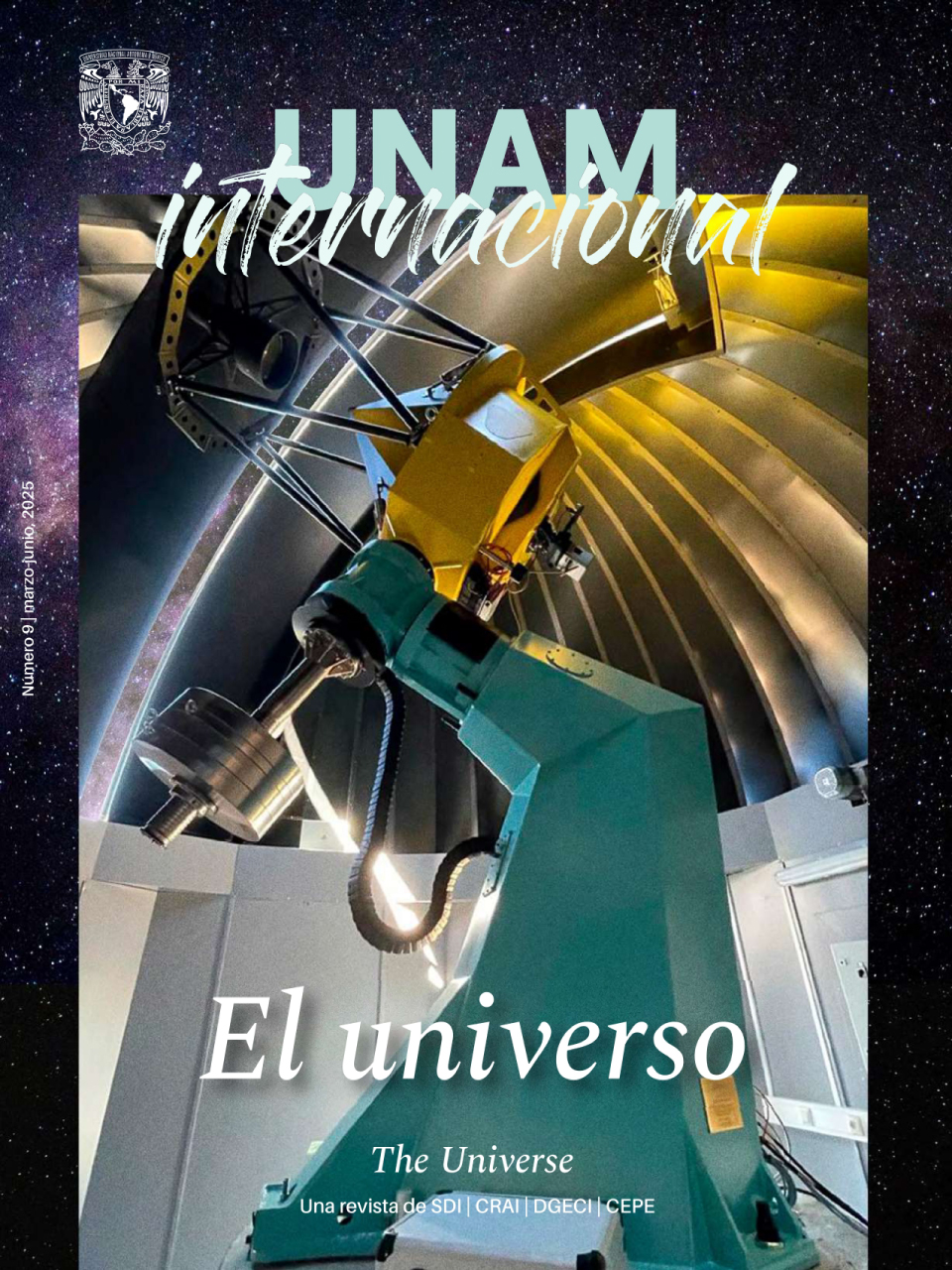31-03-2025
Mexico and the Gran Telescopio Canarias. Global collaboration for technological and scientific development
The astronomical collaboration between Mexico and Spain started several decades ago. It began with individual projects and, with the beginning of the Gran Telescopio Canarias (GTC) Project, consisting of a 10.4-meter diameter mirror, driven forward by the Astrophysics Institute of Canarias (IAC), the construction company GRANTECAN and the Spanish community, it became an international collaboration with Mexican participation in a matter of months. At the start, the GTC was the world’s largest telescope for the optical and infrared spectrum reachable from Earth. Mexican astronomy actively participates through UNAM’s Institute of Astronomy (IA) and the National Institute of Astrophysics, Optics, and Electronics (INAOE), with funding from Mexico’s National Council for Humanities, Sciences, and Technologies (CONAHCYT, which today has become a State Secretariat), “in the use and exploitation of the GTC with five percent of the project and its operation and maintenance” (see https://iac.es/es/divulgacion/noticias/grantecan-recibe-la-camara-de-verificacion-el-instrumento-que-pondra-punto-el-gran-telescopio-canarias). Thus, we became full partners of the GTC with observational access in all its capacities.We will first mention Mexico’s participation in the area of astronomical instrumentation since it has driven forward engineering and technology in our institutions. The IA and the Center for Engineering and Industrial Development (CIDESI) completed the first instrumental development in 2005: the Commissioning Instrument, designed to verify that the different systems of the telescope, such as the alignment of the 36 six segments that build the primary mirror, work correctly to achieve a perfect hyperbolic surface.
The next step in the complexity of instrumental development is the first light instrument OSIRIS (Optical System for Imaging and low-Intermediate-Resolution Integrated Spectroscopy), made in close collaboration by IAC, IA, and INAOE, to initiate astronomical observation with the GTC in 2009. This allowed the national astronomical community observational access for imaging, long-slit spectroscopy, tunable and charge-shift filter imaging, and multi-object spectroscopy. The astronomical exploitation of OSIRIS by the national community is very broad and includes results for diverse astronomical objects, from newborn and evolved stars and nebulae, to galaxies and galaxy clusters. The results have been reported in scientific papers and at scientific conferences.
Mexico is also part of the consortium led by the Complutense University of Madrid (UCM) that is designing and building a second scientific instrument: MEGARA or Multi-Espectrógrafo en GTC de Alta Resolución para Astronomía. The Technical University of Madrid and INAOE are participating along with UCM. This instrument offers the GTC scientific community a new gem; an integral field spectrograph installed in 2017. Its capacity allows us to obtain any astronomical object’s structure in three dimensions through high-resolution spectroscopic data cubes. These enable us to study regions of galaxies and the Milky Way in great detail, obtaining, for example, the film characterization of the studied object, the chemical composition of the gas of the associated interstellar medium, the detailed structure of ionized gas in young stars, and the exploration of galaxies’ nuclear regions, among other astronomical objects.
Thanks to the GTC and the abilities of the instrumentation specialists at IA, we are currently leading a collaboration with the University of Florida (UF), UCM, IAC, and CIDESI to develop FRIDA (inFRared Imager and Dissector for Adaptive Optics), “an integral field spectrograph (near infrared) with imaging capability for use with the adaptive optics system of the […] GTC.” (see https://webpro-cms.ll.iac.es/en/projects/frida-infrared-imager-and-dissector-adaptive-optics). It will soon be installed and will begin tests to explore new observational horizons.
In conclusion, the national astronomical community has benefited enormously from participating in the GTC. We have grown as a scientific community thanks to observations made with first-class instruments and telescopes, as well as to the experience of developing astronomical instrumentation that impacts the world with novel scientific results and encourages new generations to follow frontier astronomical observation.
Irene Cruz-González is a Mexican astronomer and researcher at UNAM’s Institute of Astronomy. She obtained a degree in physics from UNAM’s Faculty of Sciences and both a master’s degree and a PhD at Harvard University, United States. Her work focuses on extragalactic astronomy, star formation, and the development of astronomical instrumentation. She received the National University Prize in 2002 on Technological Innovation and Industrial Design, and the Sor Juana Inés de la Cruz Recognition in 2006.
